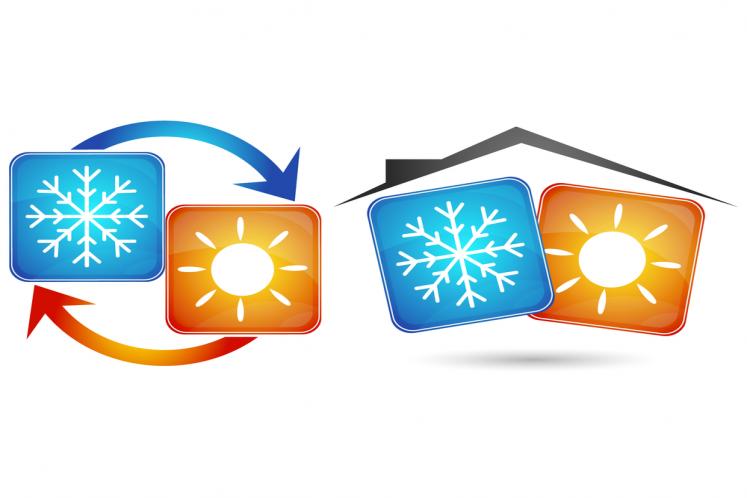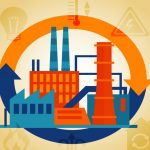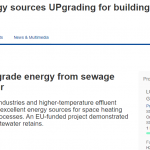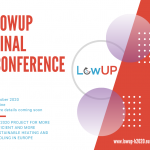5 factors are holding back the energy transition to a zero emissions Europe by 2050, writes Thomas Nowak.
The way we use energy in our society needs to change if we want to keep global warming well below 2°C, as stipulated at COP21 in Paris. This transition needs to include decision-makers on all levels and must above all include citizens.
A world without fossil fuels seems daunting, but the energy transformation is already happening: it’s entering people’s psyches, production cost is going down, and it’s ‘cleaning out’ our grids: in 2016, 86% of the new capacity built across Europe came from renewables, that’s 21.1GW of new clean energy power entering our system.
This is true for electricity, but where is heating and cooling? The sector is responsible for 51% of final energy use in Europe and about 27% of CO2 emissions. Decarbonising heating and cooling is a tremendous challenge: even in new buildings, the market uptake of low emission technologies is too slow and the renovation sub-sector is suffering from an even lower renovation rate.
Heating and cooling is a sector governed by tradition. If you need heat, you burn something – this is common practice, understood and mostly unchanged since our early forefathers lived in caves. Cooling started with ice and quickly moved to electricity, using the refrigerant cycle. Important in everybody’s daily lives, heating and cooling technology is hidden in basements and on rooftops connected via pipes and tubes to radiators, floor heating systems or ceiling boxes.
A good heating/cooling system is a working system – out of sight, out of mind. On commercial levels and in industrial processes, the same applies on a much larger scale. Functionality and reliability have too often been prioritized over innovation: why change a running system? Heating and cooling is not characterized by short innovation cycles and many systems are operated even past their expected useful life. Yet, we do need to increase the speed of change and we need it to happen fast if we are to get to zero emissions by 2050, only 33 years away.
The energy transformation implies an overhaul of the entire value chain, from research and development to manufacturing to installation and maintenance. Today’s heating industry is still dominated by fossil fuels with market shares of green heating solutions not even close to the level needed for reaching zero emissions.
But there is a bright side to it: technologies for a decarbonised sector exist and manufacturers know how to make and deploy low-to-zero emission “2050-ready” heating solutions, air conditioning systems and cooling equipment. In the construction sector, the know-how to build, refurbish or renovate a building to near zero energy standards exists. And industry is experimenting with circular economy concepts that include reusing energy.
If technologies exist, what is the problem? Five key factors are inhibiting green solutions from being the most cost efficient and most easily deployed:
- Subsidies for fossil fuels prevail across the EU, keeping operation costs artificially low. With the investment costs of greener solutions still higher, the additional costs are rarely recovered over the useful life of the installation.
- There is no price signal influencing the negative environmental impact from burning fossil energy in the heating sector. Electricity is covered by the European Trading Scheme (ETS), but combustion-based heating is not covered.
- While you can find financing solutions for buying a new car, the banking sector does not facilitate investing in new heating solutions, distribution infrastructure and building systems that would lower energy consumption.
- Current heating solutions benefit from decades of optimization and standardisation. For the installer, this is business as usual: the basic like-for-like replacement, fault-forgiving and recognized as working by the client. This ease of installation has yet to be achieved for “2050 ready” replacement solutions to come to market faster.
- If a heating system fails, a fast replacement is required, but in such “distressed purchase” situations the suggested replacement is rarely the best long-term solution. Standardized green renovation packages including financing and (if needed) an upgrade of the building envelope must become the modus operandi for business.
Addressing these points will help to unleash the power of individual, corporate, and municipal investments in favour of a more fully decarbonised heating and cooling system. This can be re-enforced further. Policy-makers must give a strong signal to end-users and industries on the need for change and the incompatibility of fossil-based solutions with the 2050 goals to reach a zero emissions economy for Europe.
View original articleComments are closed.








 The LowUP project has received funding from the European Union’s Horizon 2020 Research and Innovation Program under Grant Agreement n°723930.
The LowUP project has received funding from the European Union’s Horizon 2020 Research and Innovation Program under Grant Agreement n°723930.